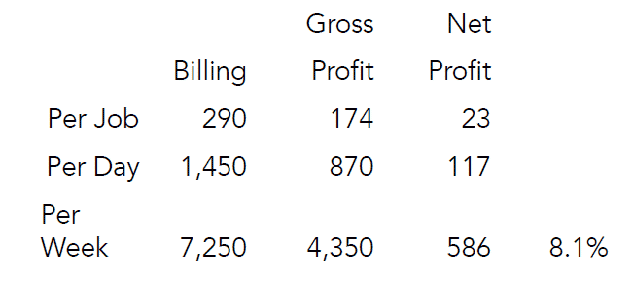You should NEVER cut price and believe it will lead to enough additional share of market to make up for the loss in revenue. NEVER.
Let me explain why in Part 2 of the Personality Prescription for Contractors.
Chuck McKay
Homeowner Motivation Scale
For years marketers have studied the people on the ends of the motivation scale.

Price Sensitive Homeowners
Call those on the left end of the motivation scale Price Sensitive Homeowners. If we compete for their business, these homeowners will grind every bit of profit out of our service.
Price Sensitive Homeowners educate themselves about every variable of our offerings until they can make a confident decision. Buying or not buying today is independent of any previous or future relationship. Price Sensitive Homeowners compare quoted prices. They weigh features and guarantees. They love the process of finding the “best deal.”
Dropping price to be competitive means we’re only working harder to put ourselves out of business sooner.
We can demonstrate this with some simple operating arithmetic. (I promise nothing more complicated than a 5th grader could handle.)
Let’s say our HVAC technician takes an hour to an hour and a half to repair a cooling system, and typically completes five or six repairs per day, at an average of $290. Assuming five jobs per day, we can expect a conservative gross billing of $7,250 per technician, per week.
And the tech we’re discussing has proven to be a money maker. He’s highly skilled at analysis and repair. He’s equally skilled at helping homeowners to see the advantages in upgrading.
Including his commission, we’re going to pay him about $50 per hour. With benefits, our total salary outlay looks more like $64 per hour.
The gross profit (gross billing minus technician salary) on each of these calls will be about $174. That also works out to $870 per day, or $4,550 per week (against gross billing of $7,250).
Of course we haven’t yet paid for the truck’s amortization, depreciation, insurance, or fuel. It’s also before rent, office expenses, and franchise fees. After subtracting all those costs, we’re left with a net profit (before taxes) of $2,048, per technician, per week – a 28% margin.

Not bad. We’re obviously running an efficient operation. All we need now is more of this profitable business.
Price Cuts for Greater Market Share?
There are new competitors popping up. “Cut your price,” friends will say. “You’ll make up for it in volume.”
Is that even possible?
We started with $7,250 that homeowners paid for our technician’s service for the week. If we cut price by 10%, we just took $725 from our top line. Where do we make it up?
We still have to pay that technician. We still have to purchase the parts he’ll install, and pay for the wear and tear on the truck. The occupancy cost for the shop is the same. There’s still insurance, accounting fees, and licensing to be paid. Plus, property and payroll taxes. And other miscellaneous fees…
That $725 just disappeared from our P&L. At the end of the week, the profit generated by our technician has been reduced from $2,048 to $1,322. Our margin has shrunk to only 18%.

Can We Take On More Jobs?
Not really.
Just to break even, reducing price by 10% means we now have to sell 54.7% more repairs. To reach the same level of profit, our tech has to repair 46 systems each week instead of 30.
Of course, the extra 19 hours per week our tech is working are all overtime. Time and a half will erode another $1,824 eroded from the profit column. (It will do damage to our tech’s sunny disposition, too.)
Oops. We’re now in the red by $501 per technician per week.
Even if we could manage the extra technician time, we won’t attract those repairs. The lower price won’t do much to increase our closing rate.
Why?
Remember that 30% of homeowners who won’t like us? They still don’t like us!
10% off doesn’t suddenly make us more attractive. 30% or 50% off might budge them into “OK, I guess we can try this company” territory, but if we can’t survive on 10% less, 30% to 50% less revenue is impossible.
It just can’t be done.
Yes, a strong salesperson can upsell once he’s in the home. That salesperson can upsell from a more profitable position, too. Not a factor in these decisions. Trust the arithmetic.
There will never be enough Increased volume to make up for a price reduction in home services contracting.
How do you keep running into cheap homeowners who don’t want to pay your premium prices? Part 3 of this series explains.
__________
The content for this series of posts was taken from Chuck McKay’s The Personality Prescription for Contractors, available on Amazon.
Links to previous posts in this series:
- How Many Pancake Restaurants? - October 7, 2024
- Bringing Newcomers into the Labor Pool - January 4, 2023
- Hire Veterans Reentering the Local Job Market - December 28, 2022
